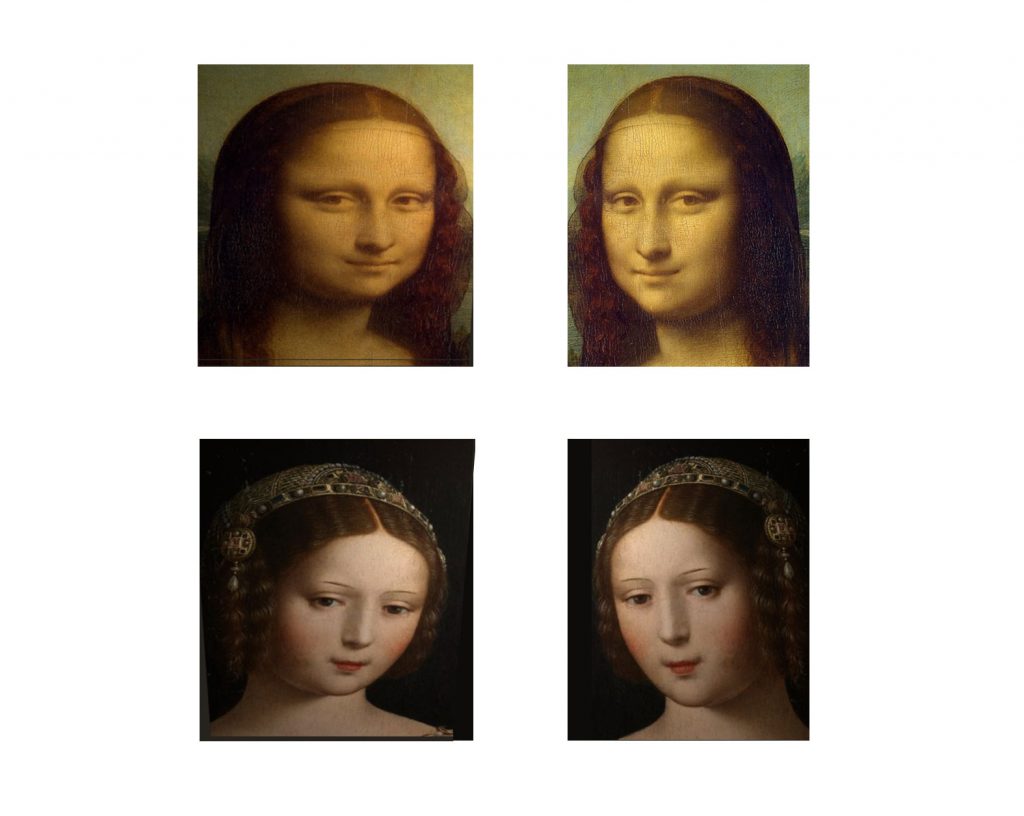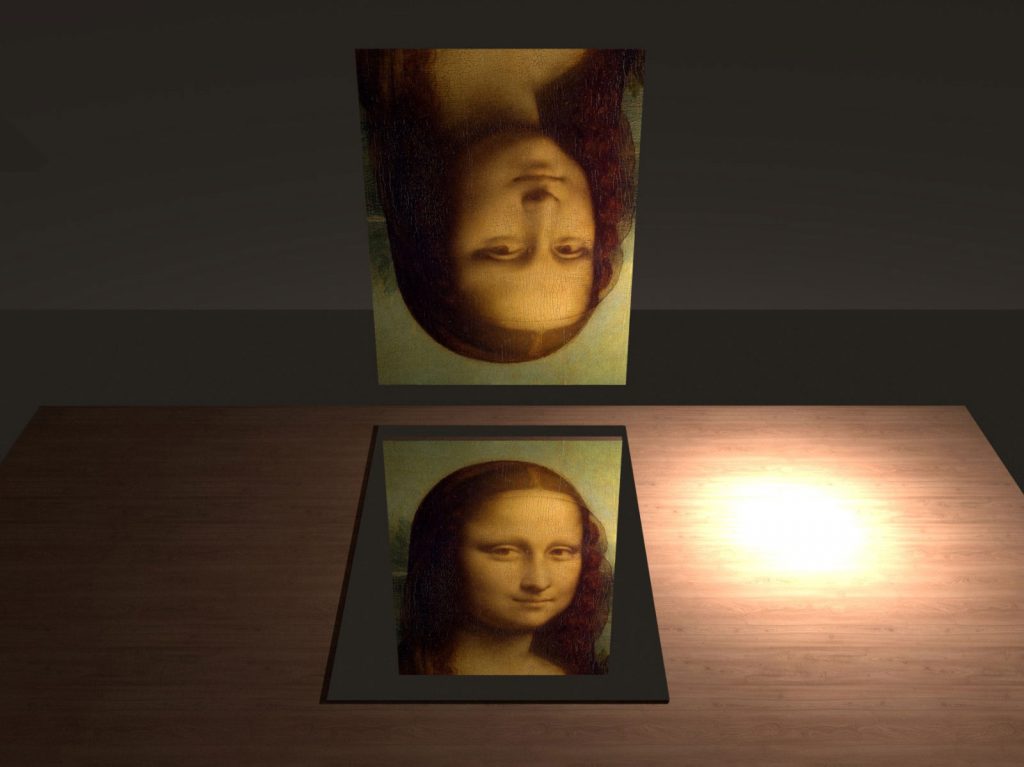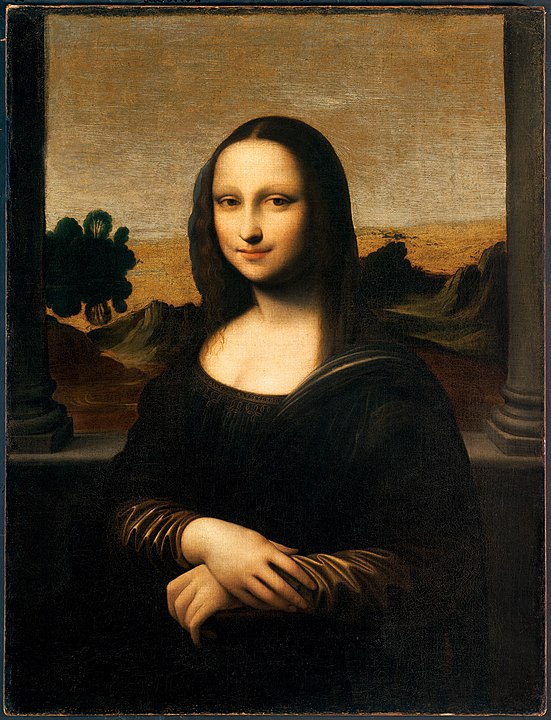On reading this blog from the bottom up we arrive at these four images. (Fig.1) The two on the right, the actual renaissance images versus the two images on the left being the image upside down a la Camera Obscura with a mirror placed at 90 degrees and a candle light coming in from the right to simulate Leonardo and when he would have viewed his illicit picture. (Fig.2) As you can see the other portrait shows the same woman whereas the Leonardo Mona Lisa shows a completely different person.

If you could bear with me I will present my workings and theory.

There have been many questions regarding the Mona Lisa since its creation: Who is the sitter? Why did Leonardo carry it around from 1505 to his death in 1519? Why did he bequeathe it (alone amongst his possessions) to his former studio assistant, Giacomo Caprotti (Salai) whom he had not seen for those fourteen years? Were there actually two Mona Lisas painted? Was the contemporary Raphael sketch the actual Mona Lisa?
I think that I can answer these questions and finally bring the story to a conclusion. My involvement is purely an understanding of proportion and the mindset of an artist. When I noticed that the face of the Mona Lisa was unusually proportioned and quite unlike the faces of all his other portraits I first put her through my stencil process and immediately came upon the outline image of what to me was unmistakenly a male figure and quite obviously not what the stencil should look like. Immediately intrigued I set out to work out what Leonardo would have done. Page 1 of his notebooks reminded me of his fondness for everything mirrored so I got a set of mirrors and set to work to see if I was right. The images above are my workings recreated through a 3D simulation programme. So now I was absolutely convinced that the Mona Lisa in the Louvre is actually Salai and wanted to find out more. These are my conclusions.
The notion that the Mona Lisa is the wife of a wealthy Florentine cloth merchant came from the Renaissance scholar Giorgio Vasari in 1550 in his book, Lives of the most Excellent Painters, Sculptors, Authors and this is confirmed in a contemporary note by the Florentine official, Agostino Vespucci who commented in October 1503 on the countenance of Lisa Del Giocondo. At that time Raphael, the contemporary master, happened to be visiting Leonardo and produced a sketch of the painting that Leonardo was working on.
(Or indeed might well have been of the actual living Lisa since this was the exact timeline of all the contemporary accounts as to when the actual painting was in progress.) (Fig.3) As you will see the face is of a completely different person with the addition of pillars in the background. The discovery of this eye witness sketch by Raphael, who we can confidently say is an artist that would produce an accurate representation of a face that he was currently looking at! It draws the conclusion that the sitter was Lisa Del Giocondo and Raphael drew what she looked like, not the picture we see in the Louvre.
Now we come to the next intriguing part of the mystery, the Two Mona Lisa theory. The suggestion that Leonardo painted two versions of the picture has been around since 1584 and the historian Gian Paolo Lomazzo in his book Treatise on Painting. Many art historians over the years since then have argued the case for there being 2 paintings with a work rather incongruously named, The Isleworth Mona Lisa being the most likely candidate with carbon dating concurring with the timeline. (Fig.4)

As you can see this picture very much resembles the contemporary sketch by Raphael, a much softer and attractive face (more suitable for a wealthy Florentine merchant!) Since I started looking at this I immediately discovered that many eminent art historians agree with this theory. I started with Paul George Konody. The ones that don’t agree contend that it is of the age and style but instead came out of Leonardo’s workshop as a copy made by his pupils. But a copy of what? The 2 paintings are completely different. What were they copying?
My conclusion is that the Isleworth Mona Lisa is the portrait Leonardo produced as a commission for Francesco Del Giocondo of his wife Lisa and the painting in the Louvre is the painting that Leonardo kept with him on his travels from 1505 to his death in 1519 and is a mirror painting of his lover, Salai, concealed as an optical illusion within the visage currently seen in the famous museum. My timeline supporting my theory from the 1470’s to his death in 1519 is detailed from the start of this blog.

